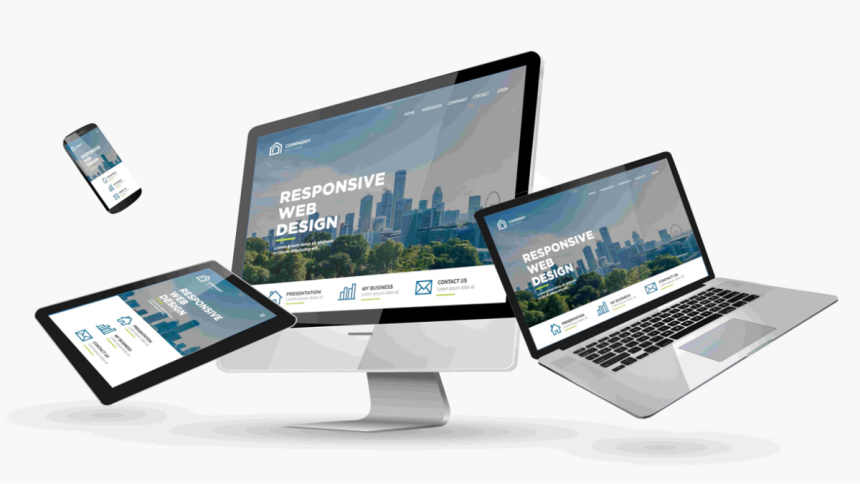Having a strong online presence is crucial for any business looking to thrive. As more consumers turn to their smartphones, tablets, and various devices to browse the internet, the importance of a website that adapts seamlessly to different screen sizes cannot be overstated. This is where responsive web design comes into play, offering a solution that can significantly impact your business’s success in the digital realm.
The Evolution of Web Design
Web design has come a long way since the early days of the Internet. Initially, websites were designed with desktop computers in mind, featuring fixed layouts that looked great on large screens but became problematic when viewed on smaller devices. As mobile devices gained popularity, some businesses opted for separate mobile versions of their websites, which often resulted in a disjointed user experience and increased maintenance costs.
Responsive web design has revolutionized the way we tackle these challenges. This approach enables a website to seamlessly adapt its layout, content, and functionality according to the screen size and orientation of the device in use.
The United Kingdom has long been at the forefront of digital innovation, with its tech sector growing at a remarkable pace. Cities across the UK have become hubs for digital creativity and technological advancement, attracting talent from around the world. London, in particular, has established itself as a global tech capital, rivaling Silicon Valley in terms of innovation and investment.
In this thriving digital ecosystem, many web developers in London and throughout the UK have embraced responsive design, recognizing its potential to create a more unified and user-friendly web experience. These professionals are at the cutting edge of web development trends, constantly pushing the boundaries of what’s possible in digital design and functionality.
Understanding Responsive Web Design
Responsive web design fundamentally relies on three core principles: fluid grids, flexible images, and media queries. Fluid grids employ relative units like percentages to craft adaptable layouts. Flexible images are programmed to adjust their size within their containing elements. Media queries empower designers to apply varying styles tailored to a device’s specific characteristics.
By implementing these principles, a single website can provide an optimal viewing experience across a wide range of devices, from desktop computers to smartphones and everything in between.
Enhanced User Experience
A key advantage of responsive web design is the enhanced user experience it provides. A responsive website allows visitors to effortlessly navigate, read, and engage with content across any device. This seamless interaction results in lower bounce rates, longer site visits, higher conversion rates, and an elevated brand perception.
SEO Advantages
Search engines, particularly Google, have made it clear that they prefer responsive websites. This preference translates into several SEO benefits, including a single URL structure, improved crawling efficiency, and better performance in mobile-first indexing. As user experience improves and bounce rates decrease, search engines receive positive signals that can help boost rankings.
Cost-Effectiveness
While the initial investment in responsive web design may be higher than creating a static website, it offers significant cost savings in the long run. These savings come from reduced development time, easier maintenance, future-proofing, and consolidated analytics. By focusing on a single, responsive site, businesses can streamline their web development efforts and make more informed decisions based on unified data.

Improved Load Times
When implemented correctly, responsive web design can lead to faster load times, especially on mobile devices. This is achieved through optimized images, minimized code, and efficient loading techniques. Faster load times not only improve user experience but also contribute to better search engine rankings, as page speed is a known ranking factor.
Competitive Advantage
In an increasingly crowded digital marketplace, having a responsive website can set your business apart from competitors who have yet to adapt. It ensures mobile readiness, expands your reach to users across all devices, facilitates better social media integration, and positions your site to adapt to new technologies as they emerge.
Improved Content Management
For businesses that frequently update their online content, responsive web design offers significant advantages in terms of centralized updates, consistent branding, flexible content presentation, and enhanced multimedia integration. This streamlined approach to content management ensures that your message remains coherent and impactful across all devices.
Looking to the Future
As technology continues to evolve, the importance of responsive web design is only likely to increase. The proliferation of Internet of Things (IoT) devices, wearable technology, and new screen formats means that websites need to be more adaptable than ever. Furthermore, as artificial intelligence and machine learning become more integrated into web experiences, responsive design will play a crucial role in delivering personalized, context-aware content.
Conclusion
Responsive web design is no longer just a trend or a nice-to-have feature—it’s an essential component of a successful online presence. By investing in responsive web design, you’re not just building a website—you’re creating a flexible, future-proof platform that can evolve with your business and your audience’s needs.
Lynn Martelli is an editor at Readability. She received her MFA in Creative Writing from Antioch University and has worked as an editor for over 10 years. Lynn has edited a wide variety of books, including fiction, non-fiction, memoirs, and more. In her free time, Lynn enjoys reading, writing, and spending time with her family and friends.















